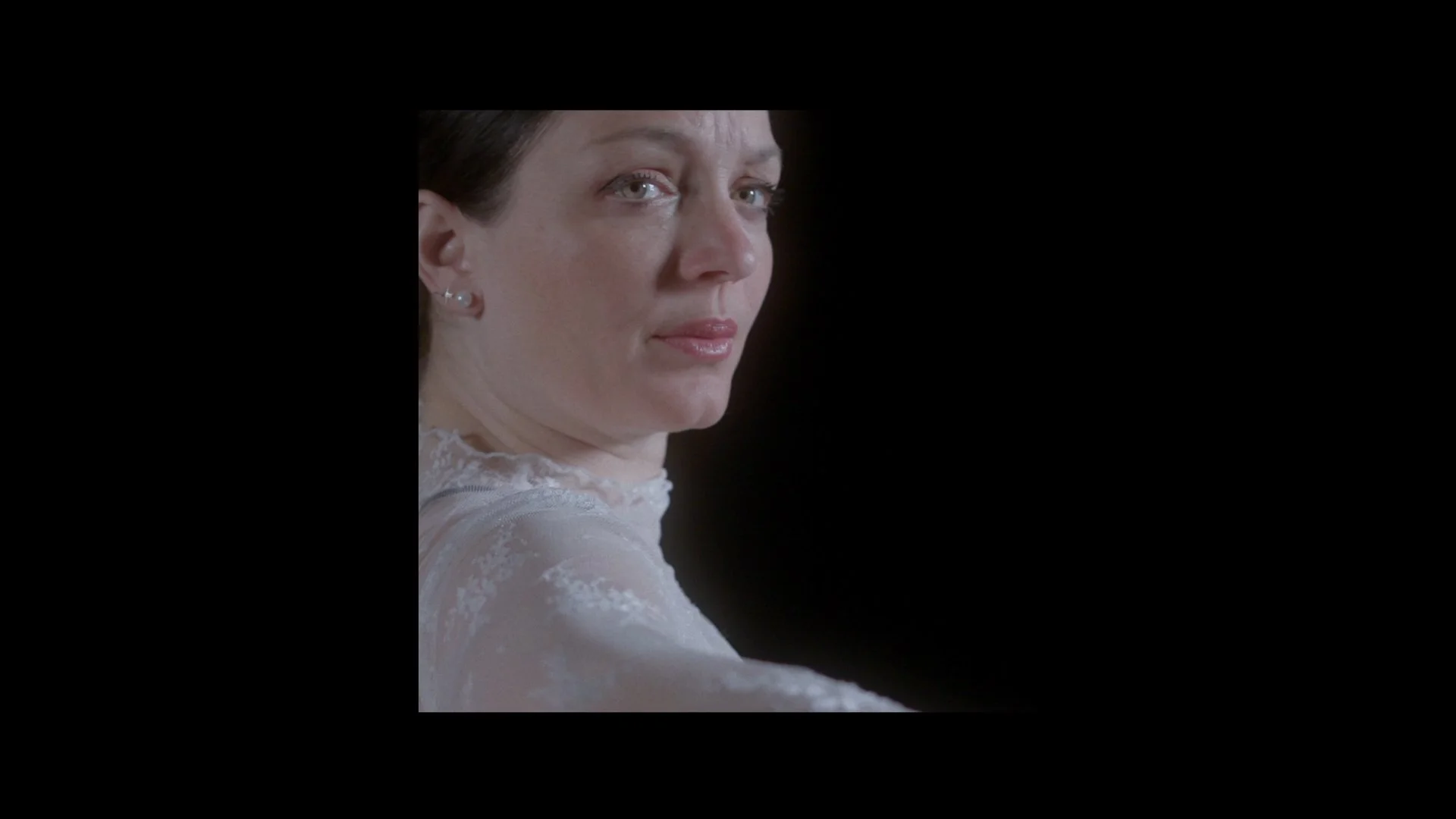Study #2
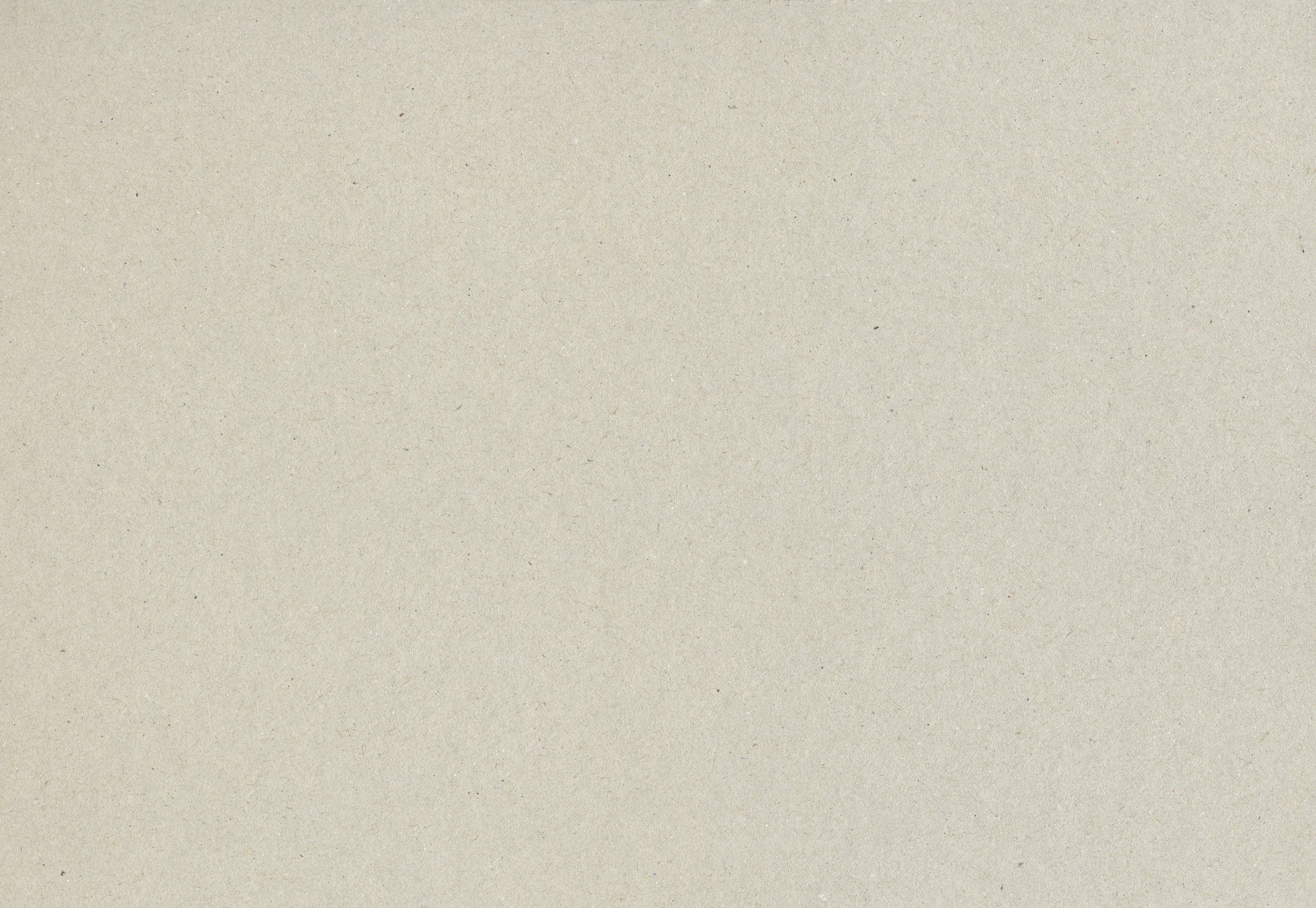
The synopsis —
Intimacy, sheer physical presence, liveliness, even the smallest registers of motion, evolve in this triptych (2022). Transcendence and transformation, and the sustained power and complexity in the manifestation of emotions, serve to delineate the heightening interactive dialogue between the flamenco performers, their individual expressions, and stimulating the senses and the imagination of the viewer.
“One of the major discussions with my collaborators on this project has been about the art of presence. What makes one performer so captivating to watch on stage, that we are compelled to watch only them. Why do we follow their journey, riveted, while the rest seems to disappear from our foreground? Through them, we are drawn into a state of presence that expands not only the worlds that they are portraying but takes us into our own private worlds of imagination, hopes, dreams and memories where we get to perceive things in a more visceral, experiential way, and are affected by it.”
— PHILIP SZPORER, Director
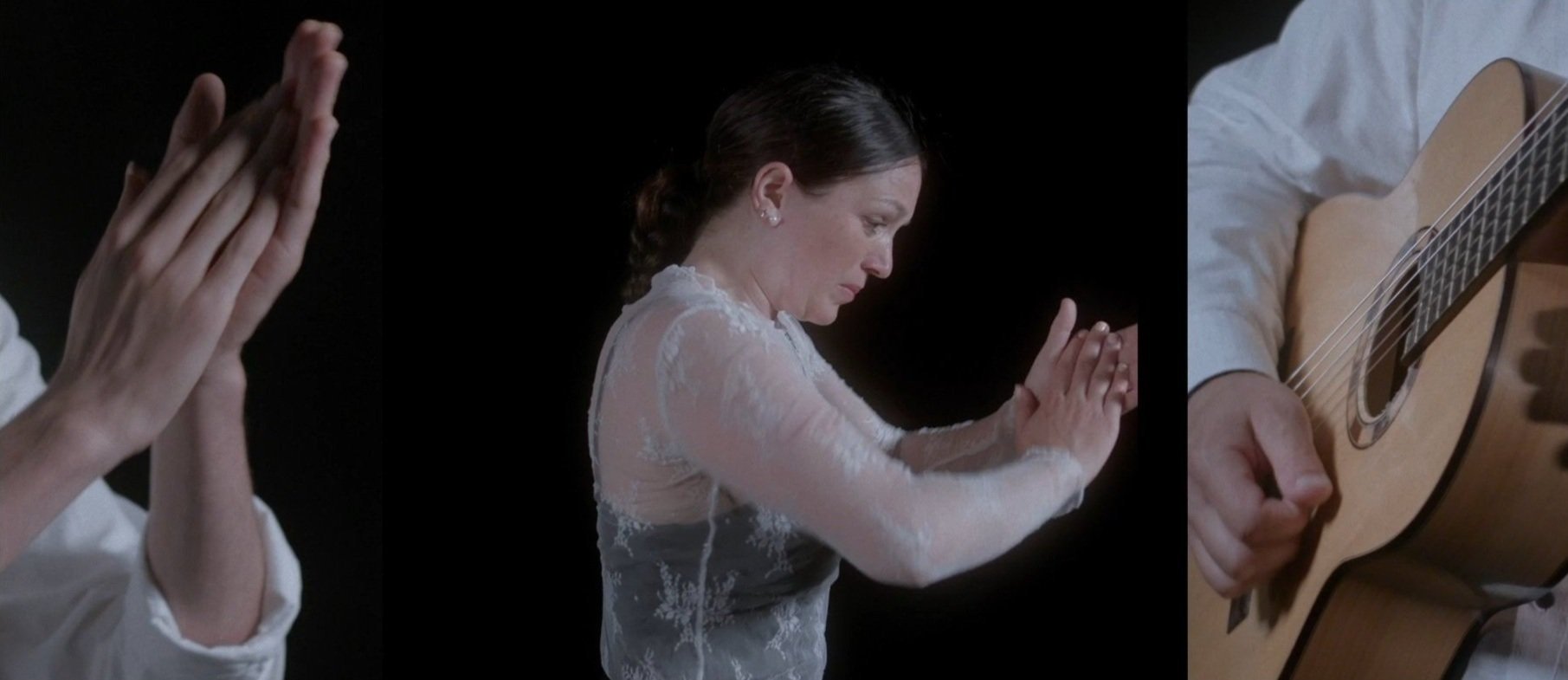

The Feldenkrais Method helps to clarify the full range of possibility for human movement and action by accessing the sensory motor processes of the brain which involve attention, perception, imagination and cognition. “I focused on highlighting the deeply interactive dialogue between the performers – an experience of the living moment where the space between performers, performance, improvisation and reality become blurred.”
– AMI SHULMAN, Feldenkrais Movement Specialist
“The focus is on the relationship between the musicians and the dancer, with no staging other than the dramaturgy of sound of voice, percussion and guitar. In this bare but charged spirit, emotion is centre stage.”
— AURÉLIE BRUNELLE

The roots of Flamenco
Flamenco communicates beyond what words can describe and beyond what movement can say. It is the language of the soul. Duende is a graceful force and spirit in flamenco, a key to authentic performance.
Flamenco’s roots date back to the 15th century medieval Spain, where Jews, Muslims, Roma, and Christians and southern Andalusian cultures co-existed for nearly eight centuries. Cultural tolerance and dialogue between these diverse groups existed, sometimes in covert circumstances. To express themselves, through the persecution, the grief and the suffering, these cultures, with layers of transnational identity, manifested flamenco. The first thing that came was the song, unaccompanied by musicians. These were wandering peoples and they often didn’t have instruments. Their instrument was their voice, and the dancing came out of the song.
“Flamenco is a matter of dialogue, sometimes negotiation. It is deliberately explosive. That’s what creates a palpable tension on the stage. The audience is on the edge, in tension, because the artists are too.”
– ALVARO ECHÁNOVE

BTS with the crew
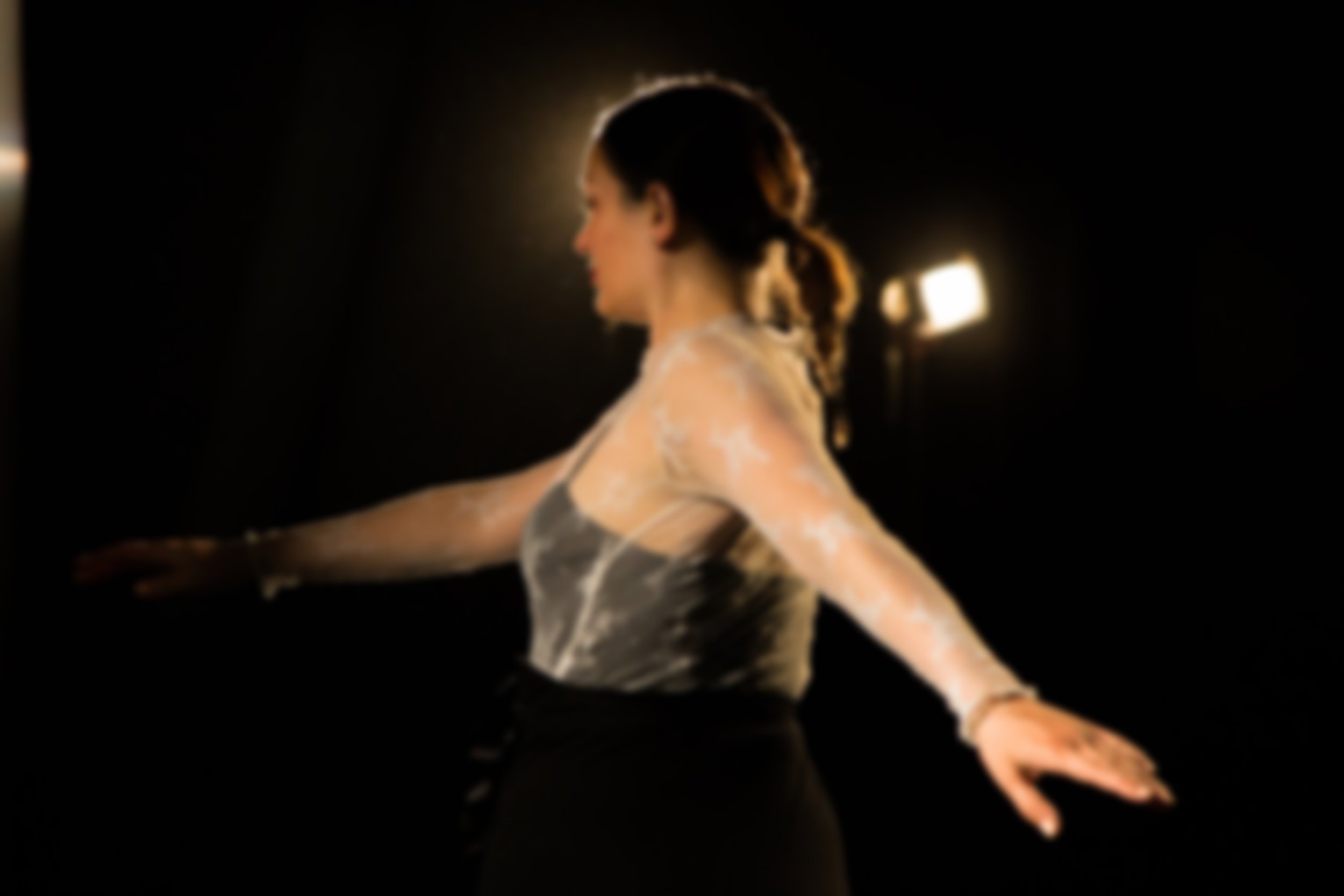
“As artist-researchers we probe the fundamental, creative relationship of the art making process to its reception as sense-experience, by the physical and cognitive response of the viewer. This project contributed to our understanding of sound and moving images as expressions of conceptual knowledge.”
— MICHAEL WEES

The
teaser ❯
A three-channel version has been fashioned as an installation for exhibition in a gallery or museum space. Also, a single-channel version is intended for cinema viewing but can also work in an installation capacity.

▲
The experimental version
Through the modulation of context (the video’s scale, speed and sound), along with the intensification of atmosphere in an immersive environment (questions of lighting and darkness within the frame and the studio space itself) we were able to register different understandings of affect. Spatial distance and lighting in various tones and contrast allowed us to create an expanded sense of depth, amplifying the moving body, enabling the analysis of shifts in expression, both corporeal and emotional, as well as considering the suspension and expansion of time.
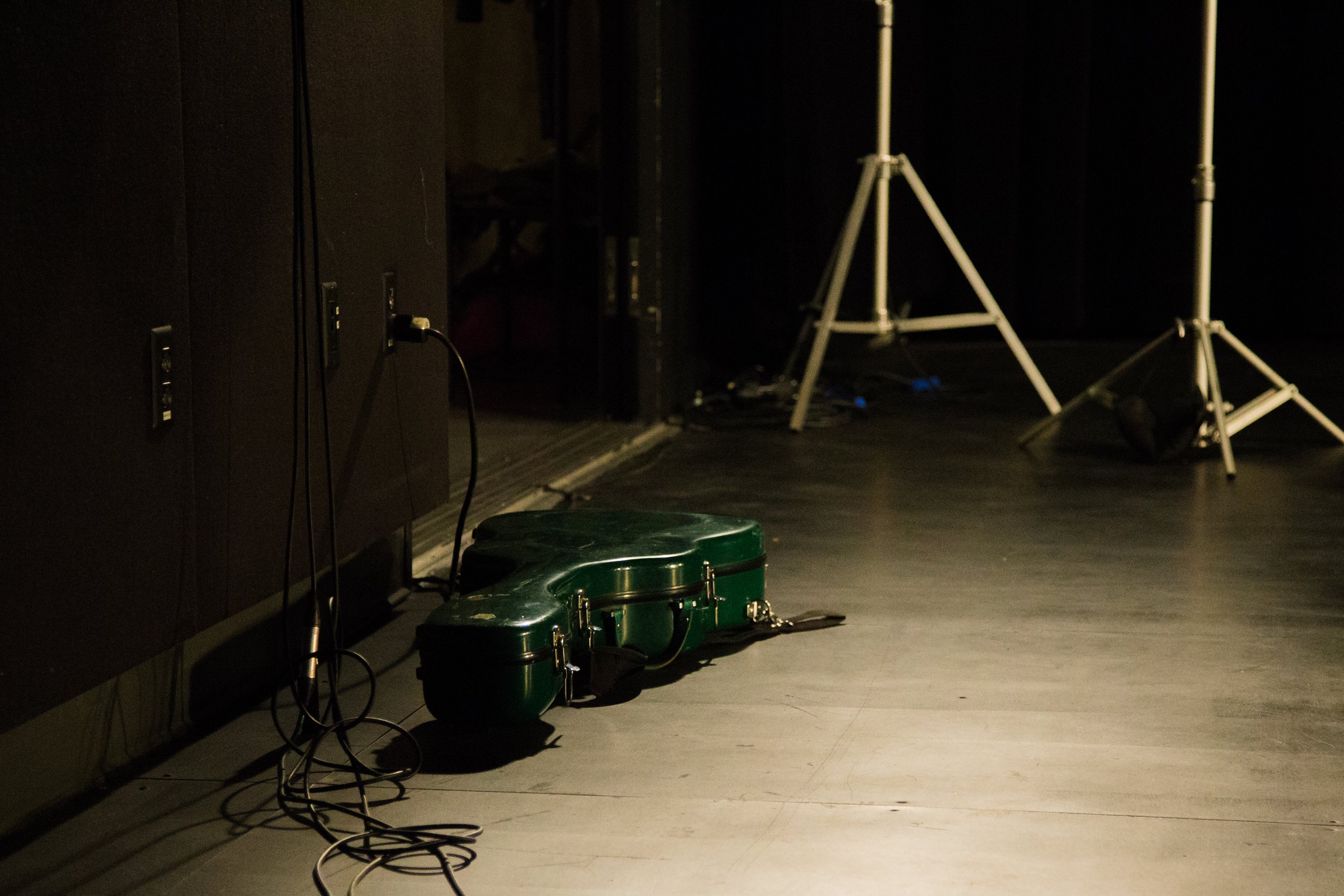
Credits

Director: Philip Szporer
Director of Photography: Michael Wees
Editor: Siam Obregón
Choreographer: Aurélie Brunelle
Performers: Aurélie Brunelle (dancer), Alvaro Echánove (singer), Dominique Soulard (guitarist).
Sound Design Devon Bate
Production Design Michael Wees
Supervising Editor Marlene Millar
Sound recording: Devon Bate
Additional Camera: Peter Hostak
Lighting Technician: Peter Hostak
Feldenkrais Practitioner Ami Shulman
Video Projection Consultant: Marlene Millar
Online Editor-Colourist: Tony Manolikakis — Rev13 Films
Set photographer: Saria Chatila
Adapted from Aurélie Brunelle’s stage work, Transciones.
Funding courtesy of the Canada Council for the Arts and the Concordia University Part-time Faculty Professional Development Large Grant Fund. Generous support from Faculty of Fine Arts, Concordia University, Concordia Fine Arts Research Facilities, Mouvement Perpétuel, and Main Film.












